Physical Address
304 North Cardinal St.
Dorchester Center, MA 02124
From the 1970s to 1990s, the abdominal radiograph traditionally served as the initial radiologic means of evaluating patients with suspected abdominal pathology. Since the early 2000s, however, computed tomography (CT) has become the major imaging procedure in patients with acute abdominal signs and symptoms. As a screening test, abdominal radiographs have a low diagnostic yield, especially in patients with mild or nonspecific symptoms. Nevertheless, abdominal radiographs remain useful for evaluating patients with a strong clinical suspicion of disease (including bowel obstruction, ischemia, or perforation) or recent abdominal surgery. , ,
A supine anteroposterior radiograph is the most common plain film examination of the abdomen ( Fig. 1.1 ). The patient should be positioned on his or her back without rotation of the pelvis. Maximal relaxation of the abdominal musculature is facilitated by supporting and slightly flexing the patient’s knees to reduce motion artifact. The film or field of view for digital imaging should be positioned with its lower edge at the symphysis pubis and the x-ray beam centered at the iliac crests to incorporate both the lung bases and symphysis pubis on the radiograph. The exposure is made during expiration and should begin 1 to 2 seconds after respiration is suspended.
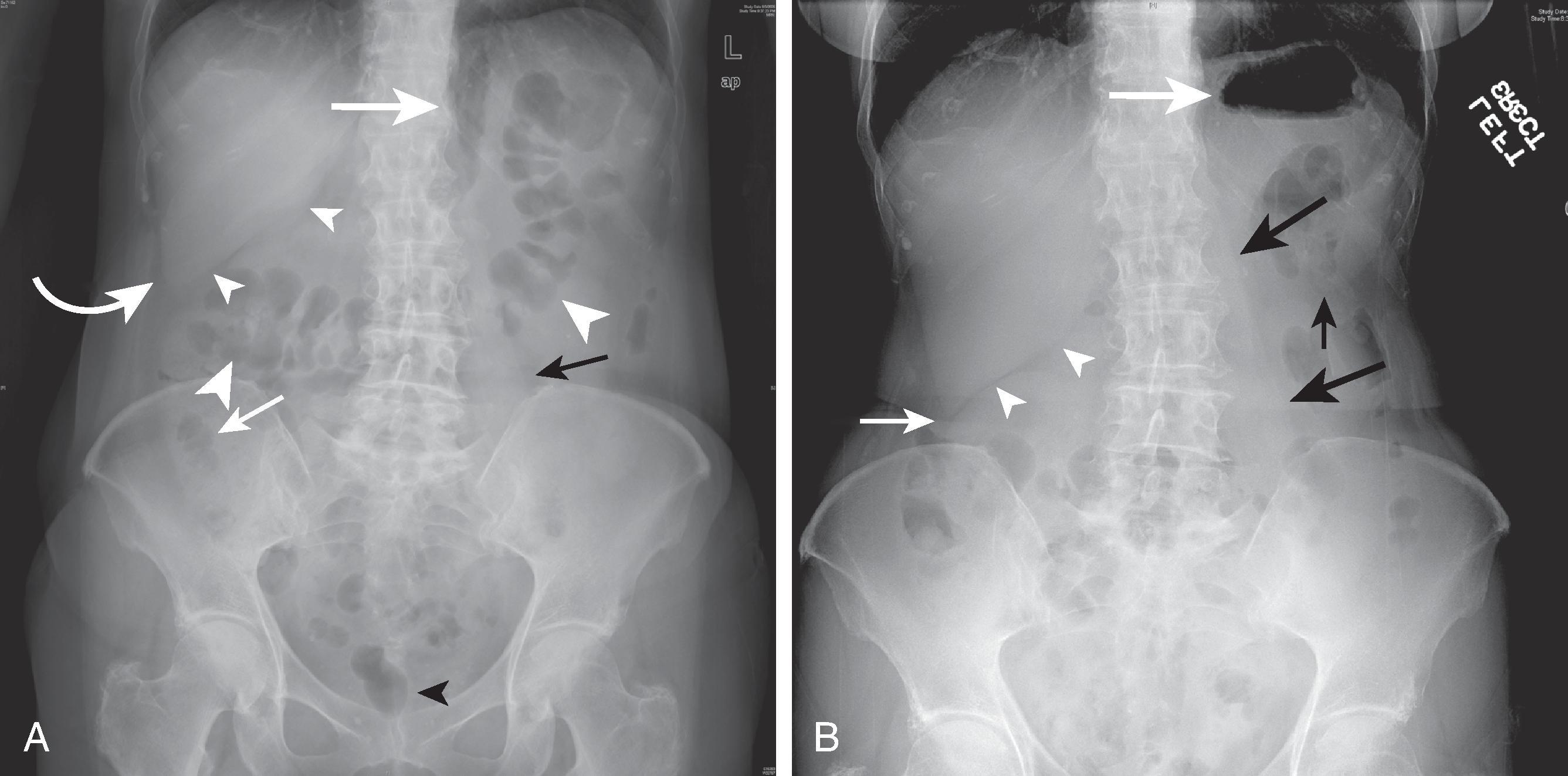
Delineation of the intra-abdominal soft tissues on abdominal radiographs depends on the inherent contrast provided by soft tissues, fat, and intraluminal gas. Radiographic contrast results from differential attenuation of the x-ray beam by patients. Most abdominal radiographs are obtained using routine equipment exposed at a low kilovoltage (60–75 kV), depending on the size of the patient. A short exposure time is desirable to avoid motion unsharpness. The lowest possible peak kilovoltage that can penetrate the patient and has an acceptable exposure time should be used. Conventional films require a reciprocating (Potter-Bucky) grid and careful collimation to reduce scatter. In males with reproductive potential, gonadal shielding should be used if the gonads lie within 5 cm of the primary beam and if such shielding does not compromise the study’s clinical objectives.
Portable abdominal radiographs may be obtained in extremely ill, hospitalized patients, but these radiographs are of lower quality than abdominal radiographs obtained in the radiology department. Such patients are usually too ill for a breath-hold, and most portable x-ray units have fixed milliampere settings, often necessitating a higher peak kilovoltage that decreases contrast. In addition, a stationary grid, rather than a Potter-Bucky grid, must be used to control scatter, and when these grids are poorly positioned, the image may be degraded secondary to grid cutoff.
In addition to the anteroposterior supine view, other projections may be helpful in specific clinical settings and are sometimes included as part of a routine abdominal series. In patients with abdominal pain, upright posteroanterior abdominal or chest radiographs may facilitate detection of free intraperitoneal air, small bowel obstruction, and unsuspected thoracic disease causing abdominal symptoms ( Fig. 1.2 ).
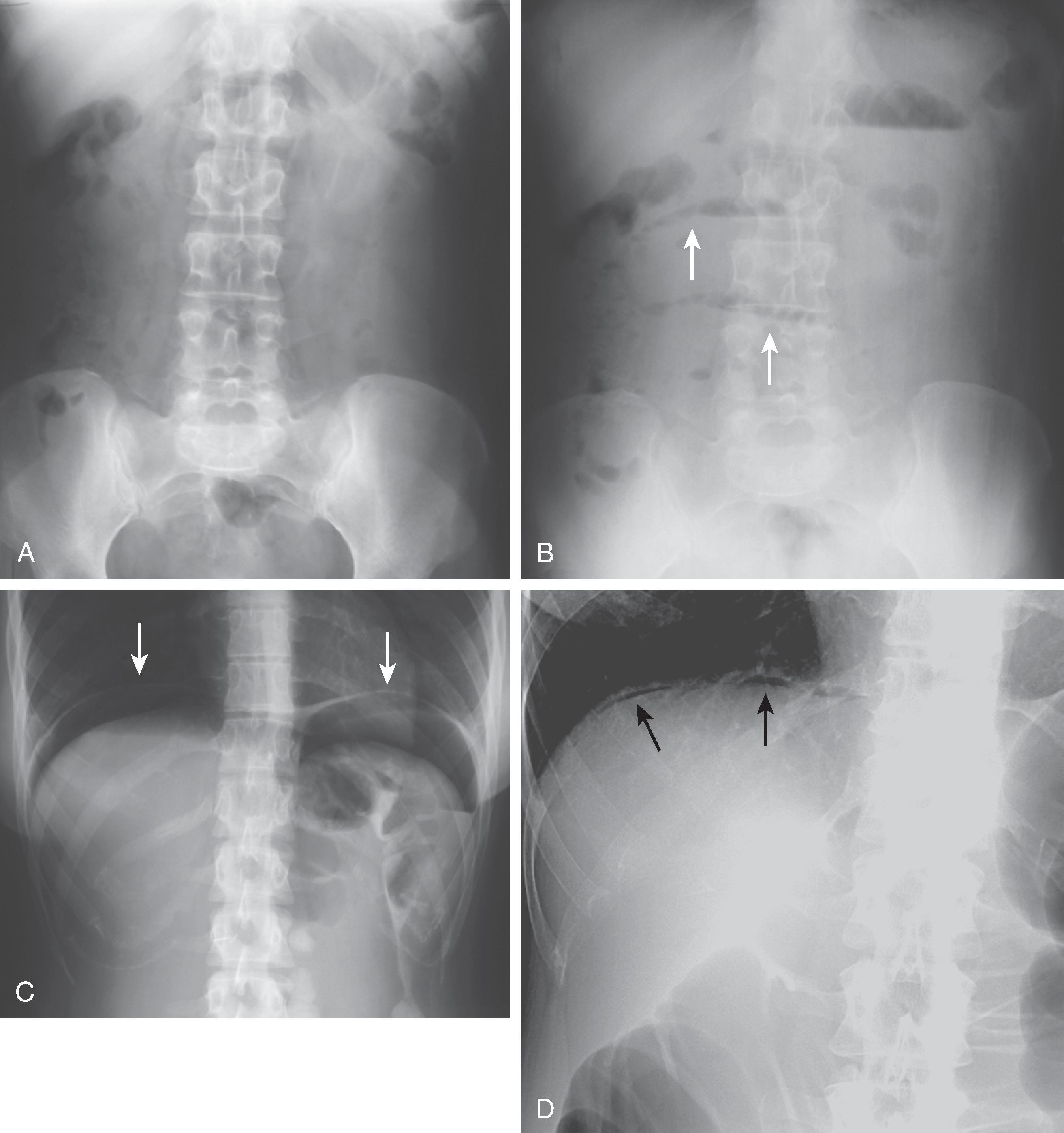
Upright abdominal radiographs are particularly important for showing free intraperitoneal air (pneumoperitoneum) in patients with an acute abdomen and clinically suspected perforation. It has been shown, however, that upright posteroanterior chest radiographs are more sensitive for detecting small amounts of free intraperitoneal air than upright abdominal radiographs. This difference in sensitivity most likely occurs because the x-ray beam is centered at the iliac crest on abdominal radiographs, so it penetrates air beneath the diaphragm obliquely rather than tangentially, making small gas collections more difficult to detect. Many experts therefore recommend including upright chest radiographs as well as supine and upright abdominal radiographs to complete the so-called “perforation” series. Even tiny amounts of free air can be detected with the use of proper technique (see Fig. 1.2D ). If patients are too ill or debilitated to stand, however, free intraperitoneal air can also be detected between the lateral border of the liver and right abdominal wall on left lateral decubitus views of the abdomen ( Fig. 1.3 ).
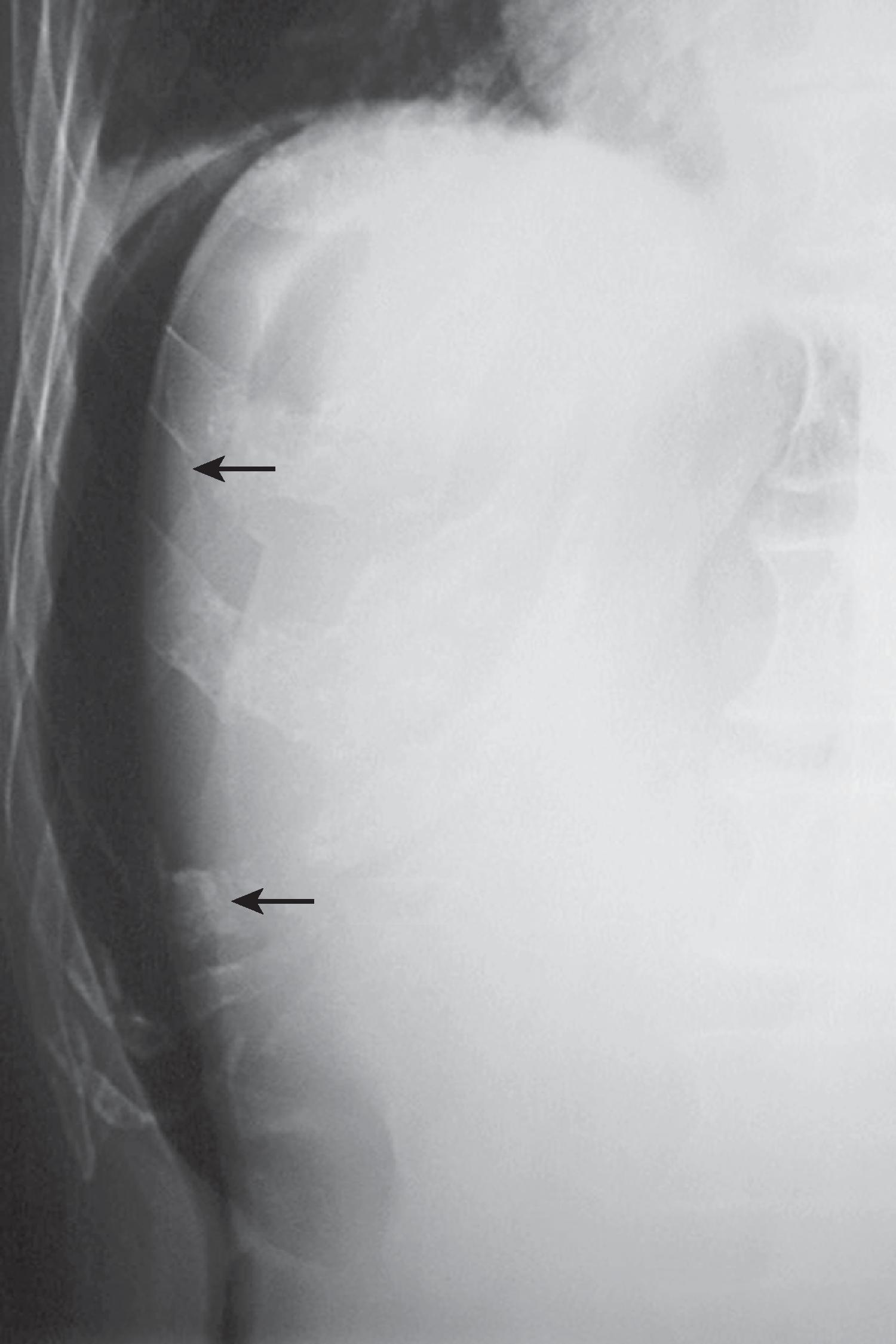
In patients with suspected bowel obstruction, upright radiographs are also useful for showing air-fluid levels in the bowel when supine radiographs show no evidence of dilated bowel or a gasless abdomen (see Fig. 1.2A and B ). Air-fluid levels can also be shown on lateral decubitus radiographs in patients who are too ill to stand.
Additional projections such as prone, oblique, lateral, or coned views may be useful for better defining and localizing mass lesions, calcifications, or hernias. When distal colonic obstruction is suspected, prone abdominal radiographs are more helpful than supine radiographs because colonic gas tends to occupy the more anterior transverse and sigmoid colon on supine radiographs ( Fig. 1.4A ), making it more difficult to distinguish distal colonic obstruction from an ileus. In contrast, prone (or right lateral decubitus radiographs) may show gas filling the rectosigmoid colon if no mechanical obstruction is present ( Fig. 1.4B ), thereby differentiating ileus from obstruction.
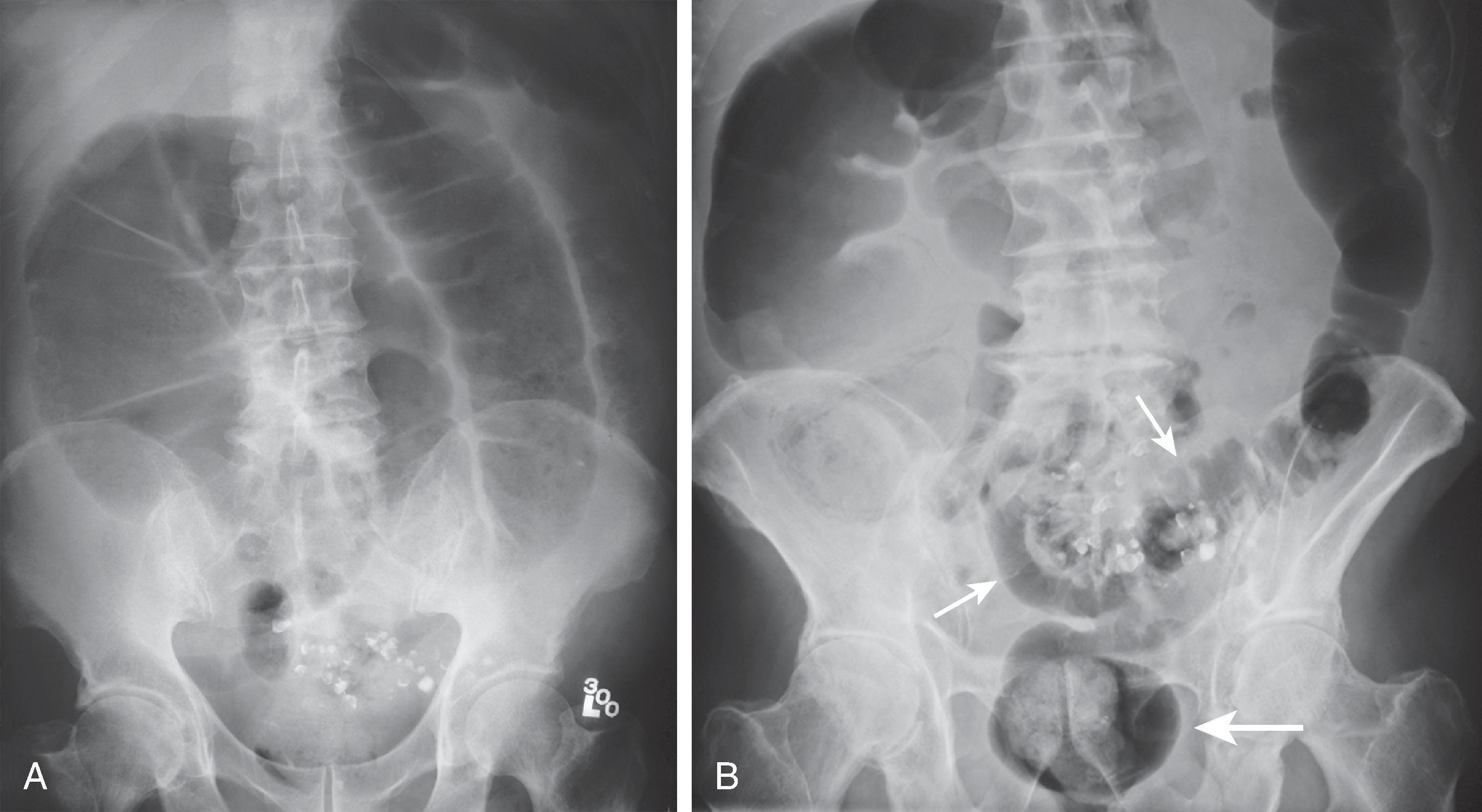
Abdominal soft tissue planes and visceral surfaces are visible on abdominal radiographs because of the natural contrast created by surrounding fat. Interfaces are best visualized when they are smoothly marginated and oriented in a sagittal or transverse plane tangential to the incident x-ray beam. Familiarity with the location of abdominal organs and commonly visualized tissue planes is helpful for identifying normal anatomic structures and recognizing pathologic processes.
In the normal adult, the liver occupies the right upper quadrant of the abdomen, measuring 20 to 22 cm in its greatest transverse dimension and 16 cm in its greatest vertical dimension near its right lateral border. There is considerable variation in the normal shape of the liver. With its most cephalad portion lying just beneath the right hemidiaphragm, the superior aspect of the liver is commonly S-shaped or concave. The inferior edge is usually triangular, with its apex directed caudad toward the right lower quadrant. Between 4% and 14% of the population have a prominent inferior component of the right lower lobe, also known as Riedel’s lobe, which usually extends below the iliac crest and does not by itself indicate hepatomegaly.
Although intraperitoneal fat is not always present around the liver, the right inferior edge of the liver (hepatic angle) is often visible on abdominal radiographs because it indents extraperitoneal fat in the parietal peritoneum ( Fig. 1.5 ; see Fig. 1.1 ). This fat consists of posterior pararenal fat laterally and perirenal fat medially. Perirenal fat may outline not only the medial aspect of the hepatic angle but also the cephalad portion of the posteromedial surface of the right lobe of the liver (see Fig. 1.1 ). The hepatic angle may be obscured by blood or effusions that infiltrate the retroperitoneal fat or by ascites that displaces the liver edge away from the adjacent fat ( Fig. 1.6 ). While the posterior edge of the liver is visible on abdominal radiographs (see Fig. 1.1 ), the anterior and left lateral margins of the liver are not.
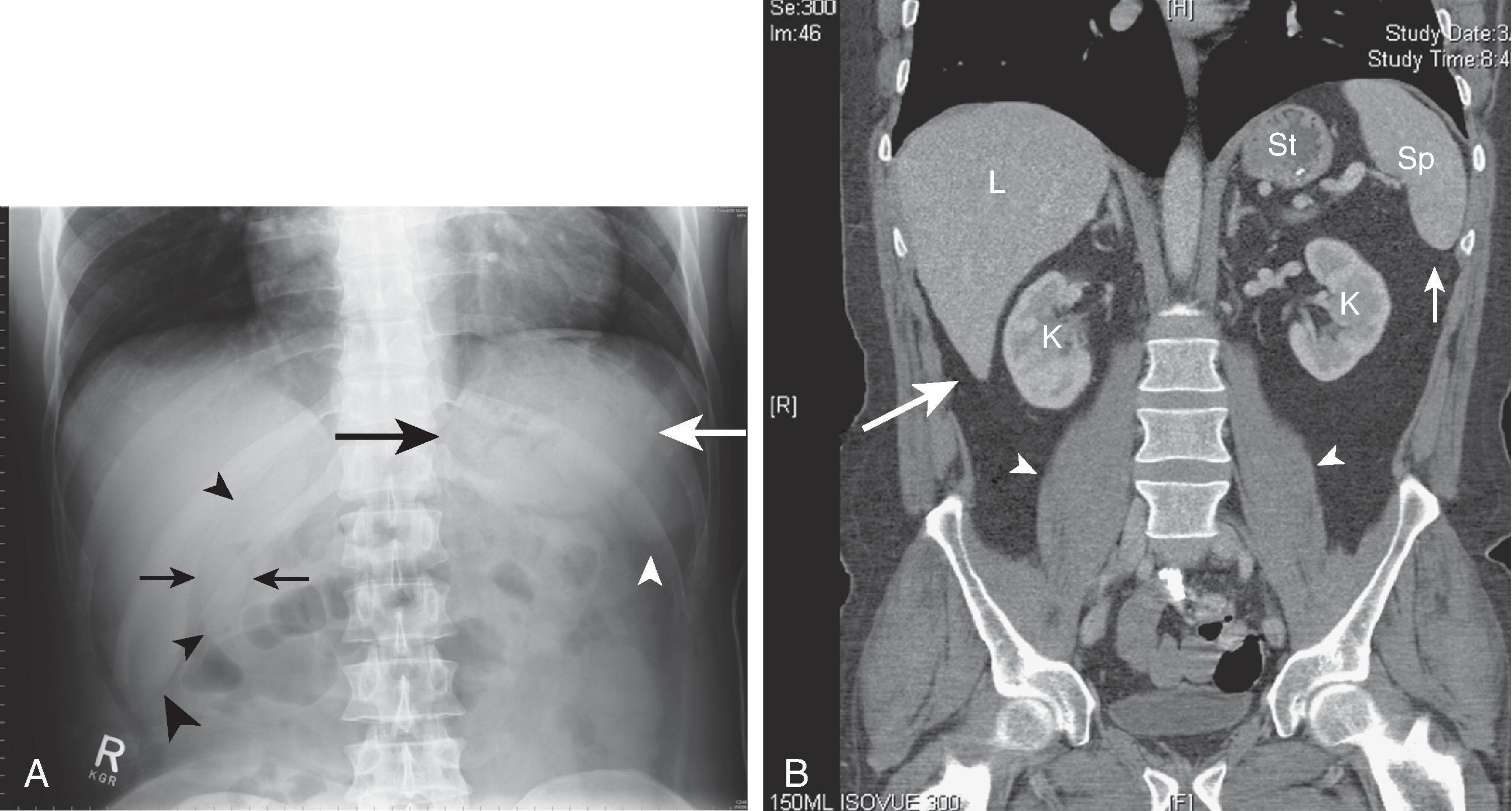
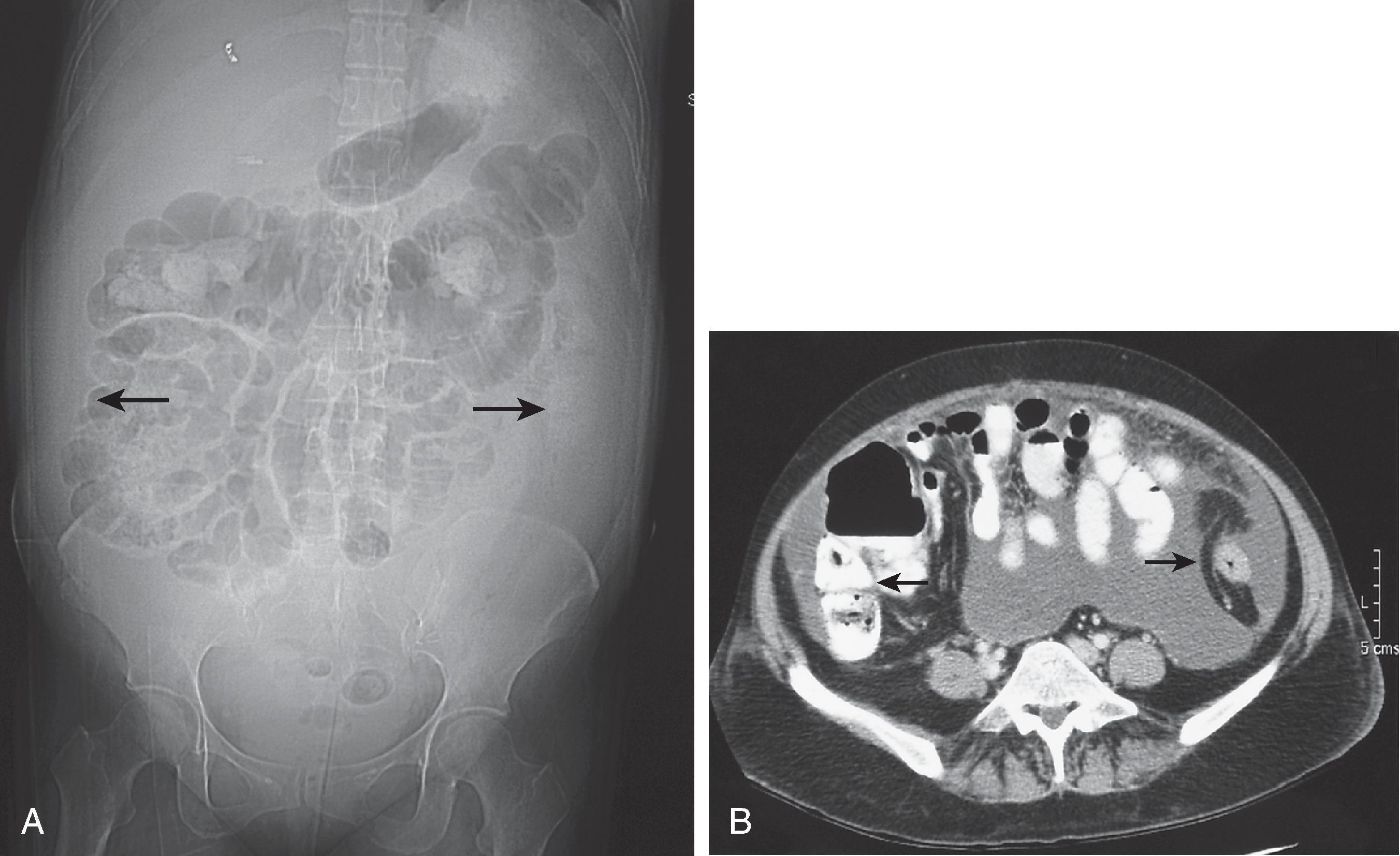
Hepatomegaly may be recognized on abdominal radiographs by visualization of the entire liver extending inferiorly into the lower abdomen, elevation of the right hemidiaphragm, inferior displacement of the hepatic flexure of the colon, and lateral displacement of the lesser curvature of the stomach by an enlarged left lobe of the liver.
The gallbladder occupies a shallow fossa on the inferior surface of the liver between the right and left lobes and is not usually visualized on abdominal radiographs. The gallbladder lies superior and lateral to the duodenal bulb and gastric antrum and superior to the proximal transverse colon. The fundus of the gallbladder may occasionally be seen if it indents the surrounding fat ( Fig. 1.7 ; see Fig. 1.5A ). Only about 15% of gallstones are sufficiently calcified to be visualized on abdominal radiographs, so the abdominal series is a poor screening study for gallbladder disease.
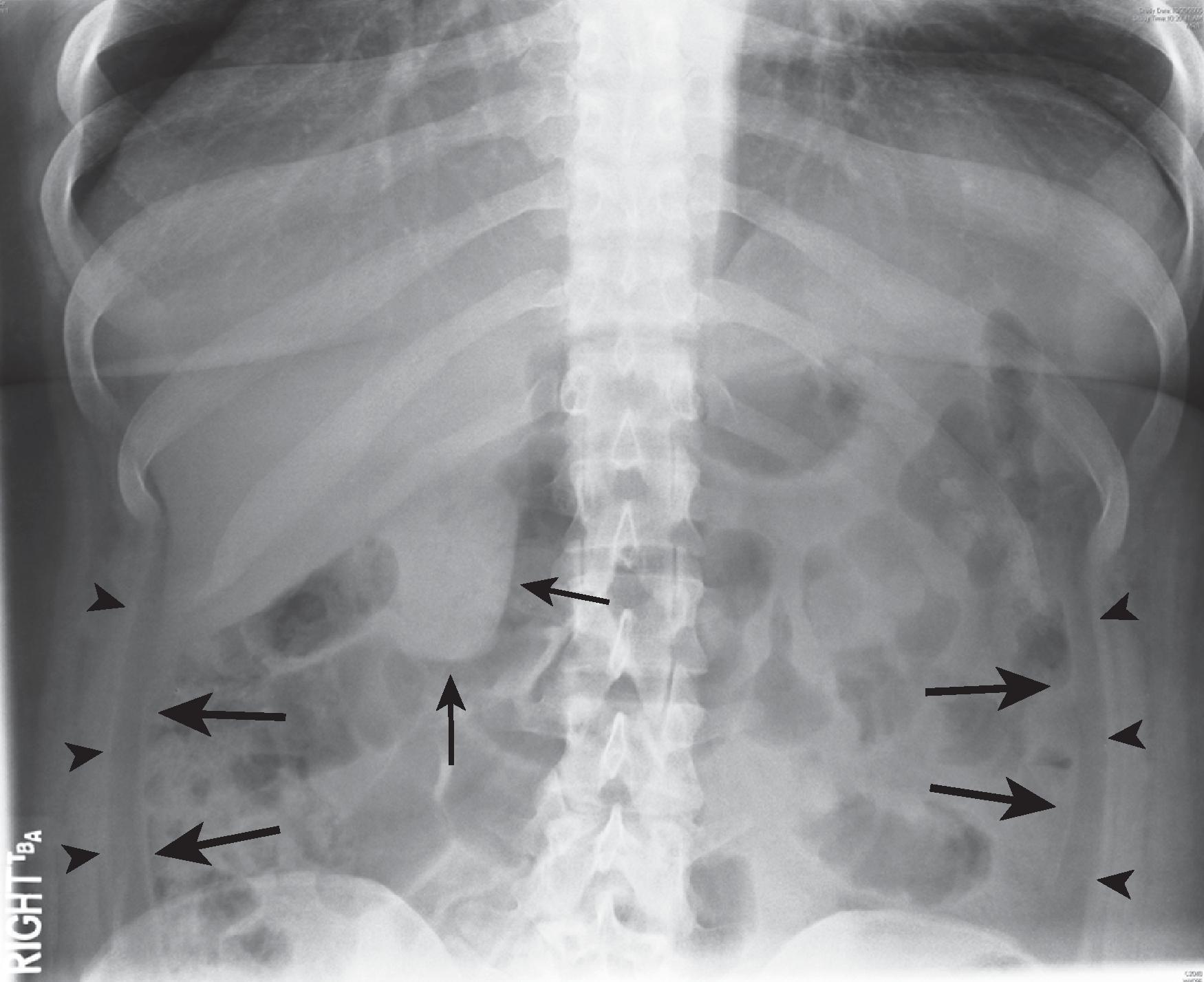
The spleen occupies the left upper quadrant of the peritoneal cavity beneath the left 10th rib and hemidiaphragm posterolateral to the gastric fundus. The normal adult spleen measures 12 cm in length and 7 cm in width. The lower edge of its inferolateral surface often indents extraperitoneal fat, and the lower medial aspect is adjacent to the left kidney, so it may be outlined by perirenal fat (see Figs. 1.1B and 1.5 ). An enlarged spleen should be suspected when abdominal radiographs show elevation of the left hemidiaphragm, medial displacement of the gastric air bubble, or the splenic tip extending below the left costal margin.
Become a Clinical Tree membership for Full access and enjoy Unlimited articles
If you are a member. Log in here